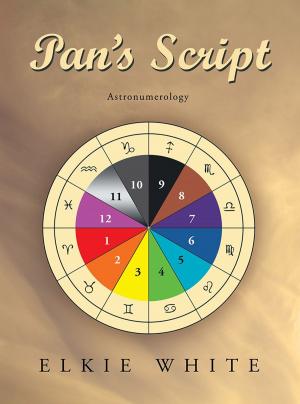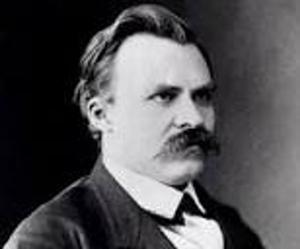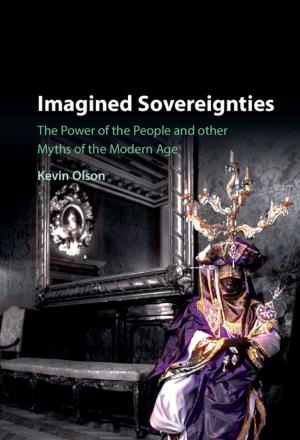The Year 838: Mixtecs Reveal the Genetic Code with Disc of Phaistos Decoded and the Ark of Covenant Explained
Nonfiction, Social & Cultural Studies, Social Science, Archaeology, Religion & Spirituality| Author: | Maciej Kuczyński | ISBN: | 9788394509408 |
| Publisher: | Maciej Kuczyński | Publication: | October 10, 2016 |
| Imprint: | Smashwords Edition | Language: | English |
| Author: | Maciej Kuczyński |
| ISBN: | 9788394509408 |
| Publisher: | Maciej Kuczyński |
| Publication: | October 10, 2016 |
| Imprint: | Smashwords Edition |
| Language: | English |
Maciej Kuczyński, author of 35 books published in 4 languages, UNESCO's IBBY Literary Award recipient, member of The Explorers Club, while studying the handpainted mexican Mixtecs' picture codice called „Nuttal”, perceives that it might depict the biological genesis of man and plants. In order to verify his idea, he undertakes the journey following the trail of mexican archeological sites, ancient sanctuaries, museums, art collections and libraries.
In the course of his many years lasting investigation he completes the evidence, that similarity of ancient pictographic symbols, as well as spoken sources – precolombian but also mediterranean ones – to the submicroscopic biological structures, such as cells with nuclei, chromosomes and DNA threads bearing linear information – is by no means accidental. Researched drawings, paintings, sculptures, as well as songs and prayers suggest that the ancients since centuries might have had the access to knowledge that is available to us only through technologically advanced research instruments.
In due course Kuczyński undertakes search for the source of this seemingly impossible knowledge that is ahead of the age of science.
It appears soon that those are the so-called shamanic „altered states of consciousness”, which open view of the hidden structures of the body. Author undertakes personal experiments of this kind under guidance of the Latin American Indian shamans, Men of Wisdom and prominent western anthropologists. Soon he is able to compare his own visions with Indian spoken and painted heritage and also with the extensive academic literature written by anthropologists who dared to undertake these so-called „shamanic journeys”. Findings leave no doubt: „shamanic introduction” offers access to the mysteries of nature and human body.
Conclusion is striking: there exists, parallel to the science, way to knowledge. This statement means not only probably the most important discovery to date in anthropology and archaeology, but can be also key for our way of understanding natural phenomena.
The second part of the book, entitled „Disk of Phaistos Decoded” demonstrates how author, getting out of his reading of the mexican pictograms, decodes inscription on the famous and so far mysterious Disk found in Crete. It appears that two ancient pictorial documents separated by the Atlantic Ocean and the time chasm of more than 2,500 years – bring similar message to the contemporary world.
The evidence is clearly and convincingly demonstrated by dozens of reproductions of ancient art compared with the biological structures as seen under microscope only to reveal striking similarity. Pictograms are accompanied by original Indian texts, ritual songs and prayers, leaving no doubt about their biological contents. The book, probably for the first time in World literature, provides well documented statement, that so-called shamanic introduction is an alternative to science way to knowledge. Probably for the first time in history of anthropology it opens the possibility of proper and full understanding of the world’s oldest written and pictorial heritage.
Readable, exciting lecture aimed for common readers as well as openminded scientists.
Maciej Kuczyński, author of 35 books published in 4 languages, UNESCO's IBBY Literary Award recipient, member of The Explorers Club, while studying the handpainted mexican Mixtecs' picture codice called „Nuttal”, perceives that it might depict the biological genesis of man and plants. In order to verify his idea, he undertakes the journey following the trail of mexican archeological sites, ancient sanctuaries, museums, art collections and libraries.
In the course of his many years lasting investigation he completes the evidence, that similarity of ancient pictographic symbols, as well as spoken sources – precolombian but also mediterranean ones – to the submicroscopic biological structures, such as cells with nuclei, chromosomes and DNA threads bearing linear information – is by no means accidental. Researched drawings, paintings, sculptures, as well as songs and prayers suggest that the ancients since centuries might have had the access to knowledge that is available to us only through technologically advanced research instruments.
In due course Kuczyński undertakes search for the source of this seemingly impossible knowledge that is ahead of the age of science.
It appears soon that those are the so-called shamanic „altered states of consciousness”, which open view of the hidden structures of the body. Author undertakes personal experiments of this kind under guidance of the Latin American Indian shamans, Men of Wisdom and prominent western anthropologists. Soon he is able to compare his own visions with Indian spoken and painted heritage and also with the extensive academic literature written by anthropologists who dared to undertake these so-called „shamanic journeys”. Findings leave no doubt: „shamanic introduction” offers access to the mysteries of nature and human body.
Conclusion is striking: there exists, parallel to the science, way to knowledge. This statement means not only probably the most important discovery to date in anthropology and archaeology, but can be also key for our way of understanding natural phenomena.
The second part of the book, entitled „Disk of Phaistos Decoded” demonstrates how author, getting out of his reading of the mexican pictograms, decodes inscription on the famous and so far mysterious Disk found in Crete. It appears that two ancient pictorial documents separated by the Atlantic Ocean and the time chasm of more than 2,500 years – bring similar message to the contemporary world.
The evidence is clearly and convincingly demonstrated by dozens of reproductions of ancient art compared with the biological structures as seen under microscope only to reveal striking similarity. Pictograms are accompanied by original Indian texts, ritual songs and prayers, leaving no doubt about their biological contents. The book, probably for the first time in World literature, provides well documented statement, that so-called shamanic introduction is an alternative to science way to knowledge. Probably for the first time in history of anthropology it opens the possibility of proper and full understanding of the world’s oldest written and pictorial heritage.
Readable, exciting lecture aimed for common readers as well as openminded scientists.















